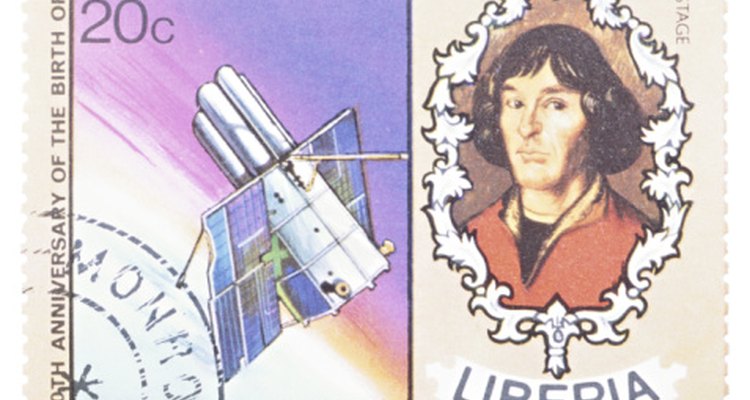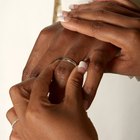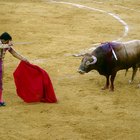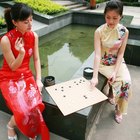
Africa's oldest republic, Liberia is a fascinating country with a tumultuous history and beautiful traditions. Though many Liberians subscribe to Western fashions and styles, rural Liberians can still be seen wearing the traditional West African garb. Special events and dance festivals such as weddings are honored by wearing both Liberian grass skirts and the long, elegant white wedding gowns popular in the West.
Traditional
Liberian women in rural areas tend to wear traditional West African clothing. Women wear the "lappa," a long skirt tied at the waist with a matching "buppa," which is a loose-fitting blouse. A headscarf that matches the fabric of the buppa and lappa is also typically worn. Clothing is usually made in vivid colors and bright designs, such as tie dye. Liberian men in rural areas usually wear the "via," a round-necked shirt that is paired with either short or long pants.
Contemporary
Urban Liberians generally wear Western clothing styles such as T-shirts, tank tops, shorts and other articles of clothing with which Americans and Europeans would be familiar. Clothing tends to be constructed from cotton, linen or other lightweight fabrics to withstand the heat and humidity.
Festival
Traditional Liberians rub white clay over their bodies and faces when there is a festival or other celebration, such as a wedding. They also wear long skirts made of grass, tunics, beads and headdresses. Urban Liberians have adopted Western-style wedding fashions, including white wedding gowns, veils and tuxedos.
Liberian Country Cloth
In West Africa, Liberia is famous for its country cloth. This textile is traditionally hand-spun, hand-dyed and hand-woven. Country cloth is often painted white but can also be colored by natural dyes such as indigo and kola, which were used to make stripes on the cloth. Traditional clothing was often made from country cloth and constructed with little tailoring. Embroidering on the pockets and neck served to strengthen these often stressed areas of clothing.
Related Articles

Traditional African Wedding Attire

What Kind of Clothing Do People in Mali ...

What Kind of Clothing Do Peruvians Wear?

What Kind of Clothes Do El Salvadorans ...

What Type of Clothes Do Mexicans Wear?

What Kinds of Clothes Do They Wear in ...

Traditional Chilean Wedding Attire

Traditional Clothing in Hawaiian Culture

What Do Brazilian People Wear?

What Kind of Clothes Do They Wear in ...

Hispanic Clothing History

About Apache Indian Clothing

What Is the Difference Between a ...

10 Facts About Clothing in Spain

What Do Chinese Women Wear?

What Type of Shirt to Wear With a ...

What Do Women Pirates Wear?

What Did Men Wear During the ...

Traditional Japanese Hats for Men

Military Dress Blues Setup Guide
References
Writer Bio
Baird Daily is an English instructor. She is published in the "World Literary Review" and has written about music and arts for the "Daily Athenaeum." She holds a B.A. and M.A. from Western Virginia University and is a doctoral student at the University of Kentucky.
Photo Credits
Hemera Technologies/PhotoObjects.net/Getty Images